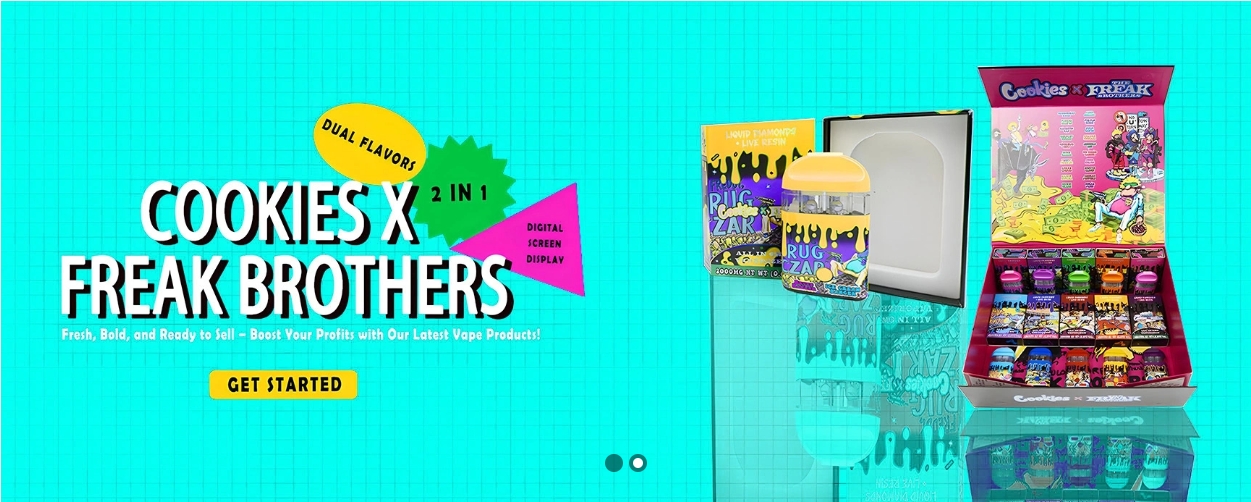When was vaping invented?

Vaping was invented in 2003 when Hon Lik created the first e-cigarette that could be sold. This vape invention changed how people smoked. Vaping became a popular choice over regular cigarettes as people learned more about the health dangers of smoking.
Key Takeaways
Vaping started in 2003. Hon Lik made the first e-cigarette. He wanted to create a safer choice than smoking.
Vaping devices have changed a lot. They went from simple models to advanced tools. Now, they have better batteries and flavors.
Flavored e-liquids and new tech made vaping popular. This is especially true for young adults.
Vaping Invented

Key Innovators
The idea of vaping mostly comes from Hon Lik, a pharmacist from China. In 2003, he made the first vaping device that could be sold in stores. His goal was to give people a safer choice than regular smoking. He did this by turning liquid with nicotine into vapor instead of burning tobacco. This change was important for how people got nicotine.
Hon Lik's work helped start modern vaping technology. He got patents in many places, like China, the United States, and the European Union. The first device made, called "Ruyan," came out in 2004. This device changed how people could use nicotine.
Other important inventors helped improve vaping technology. They are:
Joseph Robinson: In 1927, he created an idea for an electronic cigarette for medical vaporizing. He got a patent in 1930, but his design never sold.
Herbert A. Gilbert: From 1963 to 1965, he made a smokeless cigarette that used flavored liquids. Even though it was a new idea, it did not sell well.
Phil Ray and Norman Jacobson: In 1979, they made the first e-cigarette that was sold, focusing on evaporating nicotine. Their work helped future inventions.
Early Designs
The first vaping devices looked very different from what we have now. The first ones were like regular cigarettes and were called "cigalikes." These devices did not work very well and gave a simple vaping experience.
Feature/Aspect | Early Vaping Devices (Cigalikes) | Current Models (Modern Vape Mods) |
|---|---|---|
Battery | Small batteries that ran out quickly | Big lithium-ion batteries that charge fast and have safety features |
Vapor Production | Little vapor, not very satisfying | Special coils for more vapor and better flavor |
Design | Looked like regular cigarettes, small and meant to be thrown away | Many designs like box mods, vape pens, and pod systems with adjustable airflow and wattage/temperature settings |
Flavor Complexity | Few flavors, often tasted artificial | Many flavors with options for PG/VG mixes and advanced coil tech (mesh coils, temperature control) |
User Interface | Automatic draw, no controls | Touchscreens, Bluetooth, and smart settings |
The change from early designs to modern devices shows big tech improvements. Today's vapes have customizable features, longer battery life, and better safety. This change shows that people want more advanced vaping experiences.
History of Vaping

Technological Advancements
The history of vaping shows many important technology changes since it started. Vaping devices have changed through different generations. Each generation has new ideas that made them better.
Generation | Timeframe / Milestone | Key Technological Advancements |
|---|---|---|
First Generation | 2003 - 2006 | - The Ruyan e-cigarette was made with three parts (flavor cartridge, atomizer, battery). |
Second Generation | Post-2006 | - Bigger devices called vape pens were made for better battery and atomizer performance. |
Third Generation | Advanced personal vaping devices | - Mods (modifications of flashlights) allowed for more power and customization. |
Additional Advancements | Recent developments | - Sub-ohm tanks were made for high wattage devices with larger e-liquid capacity. |
These changes show how vaping went from simple cigarette-like devices to safer and more powerful systems. Better battery technology was very important in this change. Early e-cigarette batteries did not last long, so they needed to be charged often. Lithium-ion batteries gave more energy and lasted longer. Now, users can change voltage and wattage to fit their vaping style. Modern batteries also have safety features like short-circuit protection and overcharge protection, making them safer to use.
E-Liquids Introduction
E-liquids came out with the first successful e-cigarette, made in Beijing in 2003 and sold in the U.S. in 2007. Flavored e-liquids helped make vaping popular. Flavors encourage people to start and keep using vaping, especially young people. Surveys show that taste is the main reason users pick their favorite e-cigarette brand.
Flavored e-liquids seem less harmful than tobacco flavors, affecting how people see and use them.
Young people prefer fruit, candy, and menthol flavors over traditional tobacco flavors.
Limiting flavors makes e-cigarettes less appealing, especially to younger adults.
Since 2007, vaping product sales have grown quickly due to advertising and marketing. These ads often copy tobacco industry themes, focusing on freedom and glamour. The mix of new device technology and tasty e-liquid flavors has made vaping much more popular.
The history of vaping keeps changing, with ongoing research and development shaping its future. As technology improves, new challenges and chances for public health and consumer safety also arise.
Timeline of Events
Milestones
The history of vaping has many important events that helped it grow. Here is a list of key moments in order:
Year | Event Description |
|---|---|
1963 | Herbert Gilbert got a patent for the first smokeless cigarette. This is seen as the start of vaping. |
2003 | Hon Lik created the modern e-cigarette in China. This was the beginning of today's vapes. |
2007 | E-cigarettes were sold to the public in the U.S. This was a big step into the market. |
2015 | JUUL pods were launched, starting the trend of pod-based vaping devices. |
2019 | Health worries grew as many people went to the hospital for lung problems linked to vaping. |
2020 | The legal age for vaping was raised to 21. Sales of flavored JUUL pods faced new rules. |
These events show how vaping technology has changed and become more common in society.
Recent Trends
In the last few years, the vaping industry has seen some important trends. New laws have tried to lower youth vaping. This led to stricter rules on flavors and ads. For example, the FDA now requires nicotine warnings on ads. But some studies show these rules have not really changed how companies market to young people.
Technology keeps pushing new products. New vape designs and flavors have made the market bigger. In the U.S., adult vaping rates went up from 4.5% in 2019 to 6.5% in 2023. Young adults have the highest usage rates. These trends show the ongoing struggle to keep public health safe while meeting the demand for new vaping products.
Vaping has changed a lot since it was invented in 2003. Important improvements in technology and design have changed how people use vapes. Future trends show a move toward smart devices, eco-friendly products, and different vaping choices.
Readers should think about how these changes affect health and personal choices. The mix of new ideas and rules will decide what happens with vaping in the future.
As the market gets bigger, knowing about vaping's effects is important for making smart choices.
FAQ
What is vaping?
Vaping means breathing in vapor from electronic devices. These devices often have nicotine and flavors. People use vaping instead of regular smoking.
Are e-cigarettes safer than traditional cigarettes?
Many studies say e-cigarettes might be less harmful than regular cigarettes. But they can still have health risks.
Can vaping help people quit smoking?
Some people try vaping to stop smoking. But the results are different for everyone, and it may not help all users.
